Samsung Q60B Reviewed at $749.00 (55")
Product Name: Samsung Q60B
Product Description: 2022 4K QLED TV
-
Design - 9/10
9/10
-
Video Quality - 8.5/10
8.5/10
-
Ports & Connectivity - 8.4/10
8.4/10
-
OS, Apps and Features - 9.4/10
9.4/10
-
Price / Quality - 8.9/10
8.9/10
Summary
Reviewed at $749.00 (55″)
Pros
- Very thin TV
- Good out of the box performance
- Low input lag
- Plenty of online and streaming options
Cons
- Not particularly bright
- Sub-par viewing angles
- No HDMI 2.1 ports
- Uses 60Hz panel
Cheapest Places to Buy :
*We are a reader-supported website. When you buy through links on our site, we may earn a small affiliate commission at no extra cost to you. Home Media Entertainment does not accept money for reviews.*
Next week we will have our summary of all Samsung TVs for 2022 ready but for the time being we are going to take a look at the mid tier section of Samsung’s lineup. Obviously most of the attention is towards the top levels with their new QD-OLED releases but surely demand for more affordable models are higher than ever. And in our Samsung Q60B review today we will be testing the cheapest of their QLEDs that have been with us for some time now.
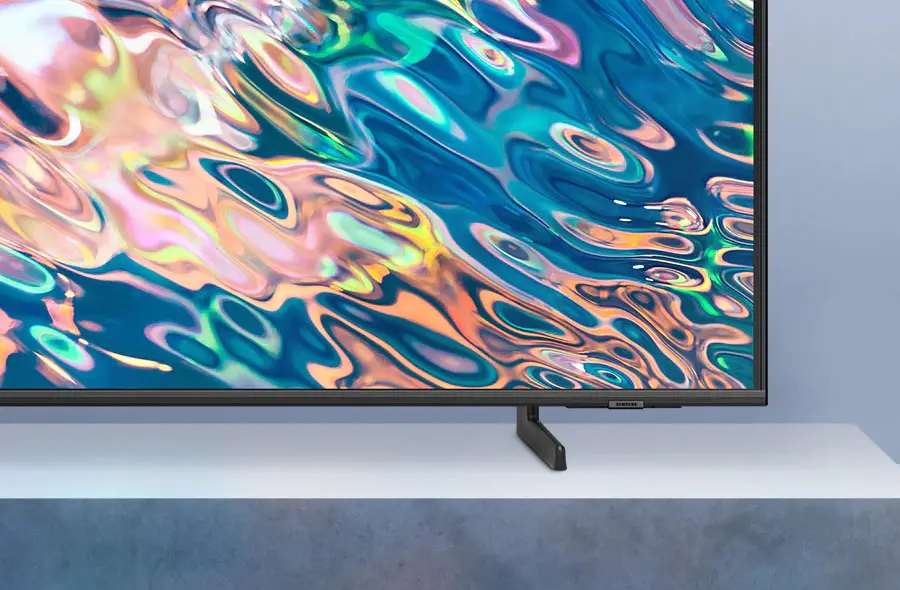
QLED was once Samsung’s top lineup but with new technologies namely Neo QLED and now QD-OLED made the aging QLED being pushed down the performance ladder. And this is evident by the reduced number of models being offered as there are only three QLEDs available in 2022. The Q60B seems to be a direct replacement of last year’s Q60A so it is interesting to see if there are actually any changes made.
Going over the specs we see that the Q60B comes in eight different sizes from 43″ up to 85″, it uses a Quantum Dot display with 60Hz of refresh rate and a Dual LED backlight, the Quantum Processor 4K Lite is taking processing duties, it features OTS Lite audio system and comes with only HDMI 2.0 ports. The latest Tizen 2022 has been included with all its updated online and streaming features.
On paper the Samsung Q60B seems awfully similar to the Q60A. At least hardware wise we don’t see anything have changed and if it wasn’t for the new Tizen we would say that it is a rebranded Q60A. Has Samsung done anything different this year or the Q60B is just a Q60A with a new OS? Let’s find out…
Design
Looking at the Q60B is like looking at a Q60A with a different stand. The main body of the TV is completely the same both in terms of size, thickness and design. The front black borders are thin enough but not as much as some more premium releases. But for this category they are normal. Max thickness of the main body is around 1.13″ (3 cm) which is slightly thinner than the Q60A making this one look great if placed on a wall.
The back of the TV is also extremely similar. The entire back face is covered in a brushed texture plastic, as per usual with most Samsung models, while special grooves on the lower part are provided for easier cable management. Everything else is standard with the power connector on the right side and only the VESA holes visible for wall mounting.
The ports are once again placed on the left side with most of them looking sideways and a couple more backwards which feels a bit of an awkward placement layout to be honest but it is exactly the same as last year.
The most notable difference is the new stand of the Q60B. In terms of ergonomics it is still the same as we get a bench type stand that is made out of plastic and surely you will need a large furniture to place the TV on. The stand legs don’t have grooves to hide the cables but instead special clips are provided to keep the cables grouped together.
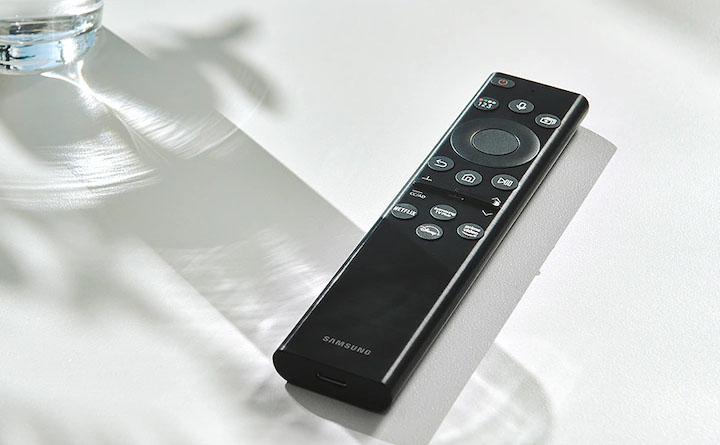
The design of the stand may be different but Samsung retained its ability to change the height in order to incorporate a soundbar under the TV if desired. This was also possible in the Q60A and it seems that consumers liked it enough for Samsung to keep it for one more year.
As for its remote the One Remote that is included is the same one that we saw during our Samsung S95B review. It is still small and uses very few buttons as it relies on the TV’s UI for most of its functions. It is using a rechargeable battery that can be charged either through a USB-C cable or from its solar equipped back side. The only difference we find this year is that the top side is now seamless while a fourth dedicated button for Disney+ has been added.
The Q60B is more or less what was to be expected from this category. Design wise it is very similar to last year with a different stand and slightly updated remote but everything else seems to be the same.
Video Quality
Processor technology used
As was the case with the Q60A last year, the new Q60B uses what seems to be the same Quantum Processor 4K Lite. Unfortunately we do not know if this is the exact same chip Samsung has been using in the previous Q60T and Q60A but from its capabilities and promotional material it seems to be the case. The Q60B seems more and more to be the same as last year’s offering.
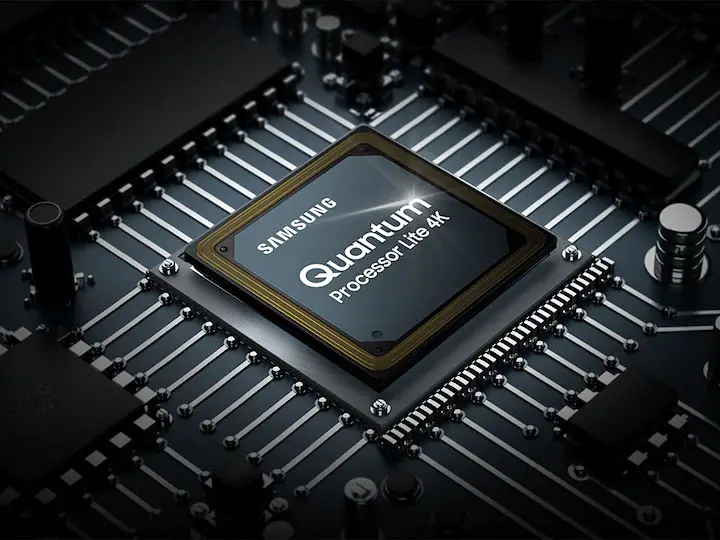
As always Samsung does not provide any details on what this “Lite” version has in comparison to the more advanced versions but it seems the Q60B is not using the same AI algorithms for it’s image upscaling. This means that while this unit can upscale any lower resolution image in 4K this is not done in the same efficient way.
From various content we tried on the Q60B the results were very satisfactory no matter what we threw at it. Obviously the upscaled image very much depends on the original content but in general the Q60B behaved as you would expect from such a TV. All kind of video resolutions from low quality 480p, 720p and even 1080p upscaled nicely to 4K without any major issues.
As for the sound the Quantum Processor 4K Lite offers Object Tracking Sound Lite and Adaptive Sound. But more on these on the dedicated audio section below.
Lighting technology used
Last year it was the new mini LED backlit TVs that draw most of the attention. This year the new QD-OLED is arguably a game changer. On the other hand the Q60B QLED settles with the aging and obviously less accurate Dual LED system which is another type of Edge LED backlight implementation.
The TV is basically borrowing the same system we found in last year’s Q60A and Q60T the year before and is what Samsung calls a Dual LED backlight system with no local dimming.
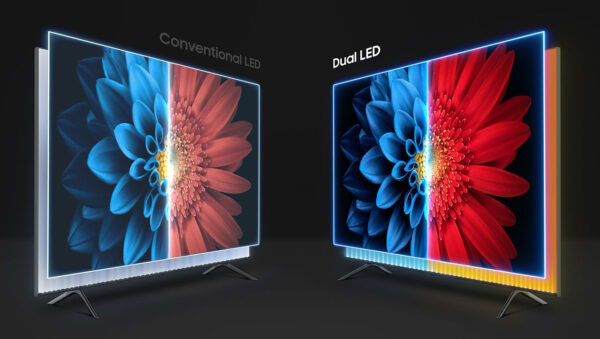
This means that the Q60B instead of having the LEDs behind the panel there is an array of LEDs on the top and bottom of the screen. This type of backlight is cheaper to incorporate and thus is used in the lower tier models but as a result we get less light control and precision compared to a mini LED or FALD systems that are the top performing systems in 2022.
But while the Q60B is fundamentally using an Edge lit system from 2020 Samsung seems to have made some tweaks to it in order to improve, in theory at least, the final result. This is why Samsung called it as Dual LED system as it uses two different LED colors and adjusts the color tone according to the image being displayed. Additionally there is no local dimming that could further help with the weaknesses such a system has.
Other than that this type of system comes with the usual advantages and disadvantages. On the positive side TVs with such a system tend to be slightly thinner but on the opposite side we tend to see strips of light from top to bottom when a bright object is displayed on the dark background.
If you want a better backlight system then you will either have to go for the Q80B which is the only Samsung TV in 2022 that still features a FALD system or considerably higher in the performance ladder to the QN85B which is the cheapest mini LED TV you can get. Unfortunately this means a considerable increase in price also.
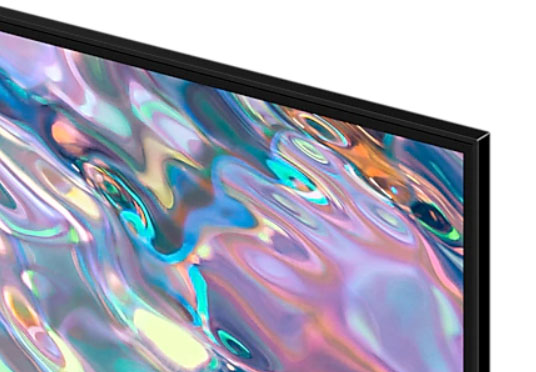
Brightness / Contrast
Brightness is one of the most looked aspects of any TV nowadays as with HDR content the need for high brightness output is bigger than ever. Unfortunately many lower tier releases fail to produce enough brightness that can make HDR content any justice. Does the Q60B fall into the same category?
For this specific part of our review we used the Movie mode and Warm 2 color tone along with max brightness. In our SDR brightness test over a 10% white window we got 480 nits which is more than enough for any kind of SDR material. Our measurements showed that the Q60B fared slightly better than the Q60A in SDR content.
On our HDR brightness test over a 10% white window we got 475 nits of brightness which is average at best and cannot really portray HDR in all its glory. HDR brightness seems to be similar to last year so nothing exceptionally different here.
Brightness levels followed the EOTF reference values very close although there were a few deviations from target values which was rectified after some calibration.
In terms of contrast the Q60B comes with a VA which means good things in general. Surprisingly the TV performed better than the Q60A but we cannot say if this was due to the use of a different panel or if Samsung did something to improve this.
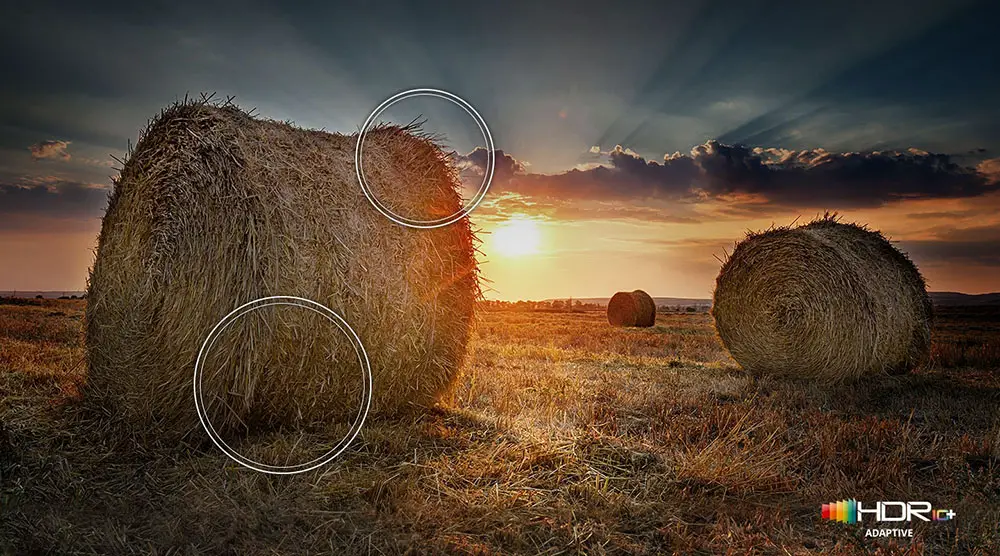
In general the Q60B performed very similar to the Q60A. It did improve in some areas like slightly better SDR brightness and better contrast but the differences are very small to be considered meaningful.
Viewing angles
As many TVs from Samsung, the Q60B is using a VA panel and as a result the viewing angles are not that good. And to make matters even worse this model is not equipped with the same Ultra Viewing angle technology that we find in some of the top-tier units that helps a little with this problem.
As a result this unit has very mediocre viewing angles. We could say that the maximum angle that image integrity was kept was around 26 degrees or slightly above that. But as with most VA panels anything more than 30 degrees would make the image degrade very much to be consider watchable. So you should consider this if you want this one for family use or if you plan on watching from various angles.
HDR support
HDR support is another area where Samsung hasn’t changed much in 2022. As such we get the most basic HDR10 that is required for 4K UHD playback, there is HLG that is used mainly for broadcasting along with the newer HDR10+ which is the most advanced HDR protocol that uses dynamic metadata in order to provide the best image quality on a frame by frame basis, similar to what Dolby Vision is doing.
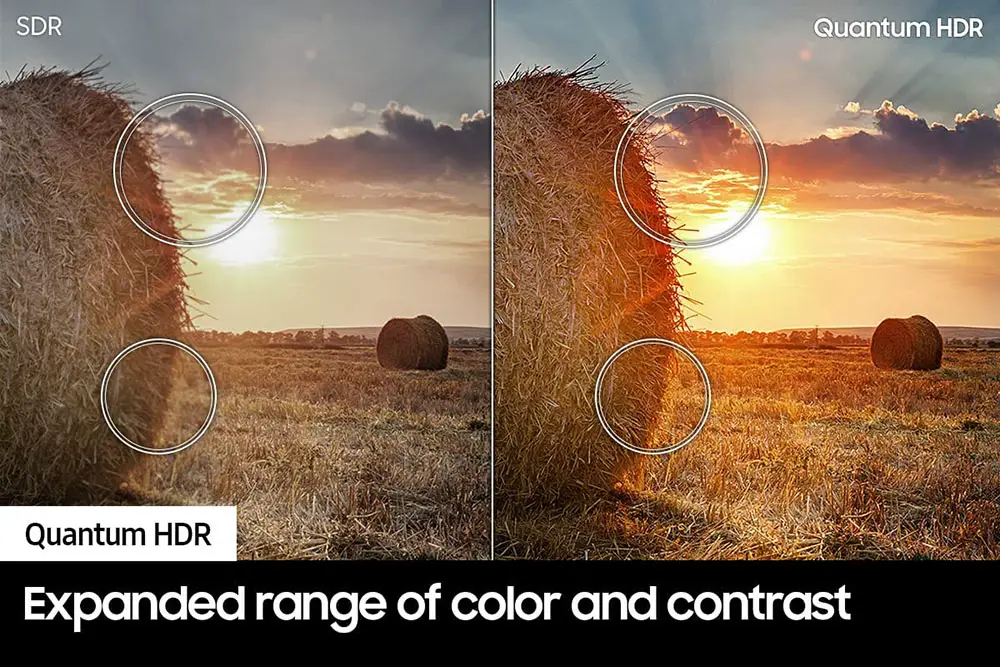
The Q60B comes also with HDR10+ Adaptive. HDR10+ Adaptive uses its AI engine to analyze the viewing environment, including the lighting, brightness and even reflections using the sensors equipped on the TV. The results are then incorporated into the dynamic metadata, and then through four further steps, the brightness and contrast of a scene are optimized. This way you can view HDR10+ movies and television programs in various environments at home.
Samsung continues to say no to Dolby Vision but to be honest it doesn’t matter so much with lower tier TVs as these don’t have the capabilities to display HDR as it should anyway. Samsung remains very confident supporting HDR10+ instead but in our opinion this is a pointless conflict and all manufacturers should embrace all HDR formats instead of pushing consumers to choose by brand because of this.
Color coverage
The Q60B is the last of the QLEDs which means is the last model that uses Samsung’s special Quantum Dot layer in order to display more vivid and lifelike colors.
According to our measurements the TV can cover 91% of the DCI-P3 color space and 68% in the wider REC.2020.
These numbers seems a bit lower than the Q60A but again the differences are small and different panels could give different numbers.

When measuring a 10% window, color accuracy was very good and all colors had values well below the DeltaE limit of three with the only exception being very bright whites. After calibration we also managed to bring the white balance below the value of three.
Color gradients were good but there was some noticeable banding in the darker colors. There is also a Noise Reduction function in case of very annoying banding but to be honest we didn’t see much of a difference when enabling it.
Motion performance
Things seem a bit of the same in the motion performance area also.
The Q60B seems to come with a 60Hz panel along with a backlight dimming frequency of 480Hz which is the same as the Q60A was using. Having such a high frequency ensures that flickering is completely invisible but this also depends on the picture mode you will be using as depending the settings the frequency can drop even as low as 60 Hz.
Obviously we also get motion interpolation which Samsung had renamed last year to Motion Xcelerator and is the most basic variant Samsung has compared to the more premium releases. The Q60B was good enough at removing judder but this was also very much dependent on the scene. When there was crazy action some artifacts would become more than obvious.

Enabling motion interpolation can be done by going in the Picture Clarity settings in the menu and by adjusting the judder slider as much as you like it. Very high value and the “Soap Opera Effect” will appear but keeping a very low value like 1 or 2 seems to be good enough without any major alteration to the overall motion presentation. Keep in mind that there is no blur slider here as some higher tier units offer and thus overall the Q60B is more limited in what it can do with motion.
Black Frame Insertion (BFI) is also available as usual which can be enabled in the menu with the LED Clear Motion option. BFI is a technique that inserts a black frame in between two individual frames in order to smooth out motion. Although the end result depends on the content it has a couple of side effects. First due to the black frames brightness takes a visible hit while due to the lower frequency used, 60Hz specifically, some flickering may become noticeable.
Overall the Q60B is not much different from the last couple of Q60 releases we had tested and thus scored almost the same across all our tests.
Input lag
In our input lag test now and the Q60B gave us the kind of numbers we were expecting. With Game mode turned on we got 10.3ms average for 1080p and 4K resolutions which is just about the same with what we had measured last year in the Q60B. With so low input lag even if you are a hardcore gamer you will have no problem whatsoever with your gaming sessions.

Outside of Game mode things are not so clear cut as different modes tend to give different results but in general we got an average of 71ms which is still good enough for casual and offline gaming where rapid response is not so crucial. This number is slightly better than what the Q60A could do outside Game mode. The TV also comes with Auto Low Latency Mode (ALLM) and all the latest consoles support this which can be of great benefit.
The Q60B does not support any kind of VRR technology. If you definitely want VRR you will have to go for a more expensive unit unfortunately. There is also support for 1440p resolution but this can only be used effectively in PC mode.
Last part of this test is by trying a couple of games in our PS5 to get a real world feel of how the Q60B behaves and to be honest with Game mode enabled we didn’t notice any problems at all. Both Call of Duty: Vanguard and F1 2021 that we tried had smooth and blazing fast response times and no obvious delays that could degrade our gaming experience. If you want a cheap gaming TV then the Q60B really fits the bill.
Image quality impressions
Last year we said that the Q60A was not all that different from 2020’s Q60T and it seems we are going to repeat ourselves one more time this year. The Q60B has small differences compared to its predecessor but these are so small that could very well be due to us testing a different panel and doesn’t mean that Samsung changed anything meaningful.
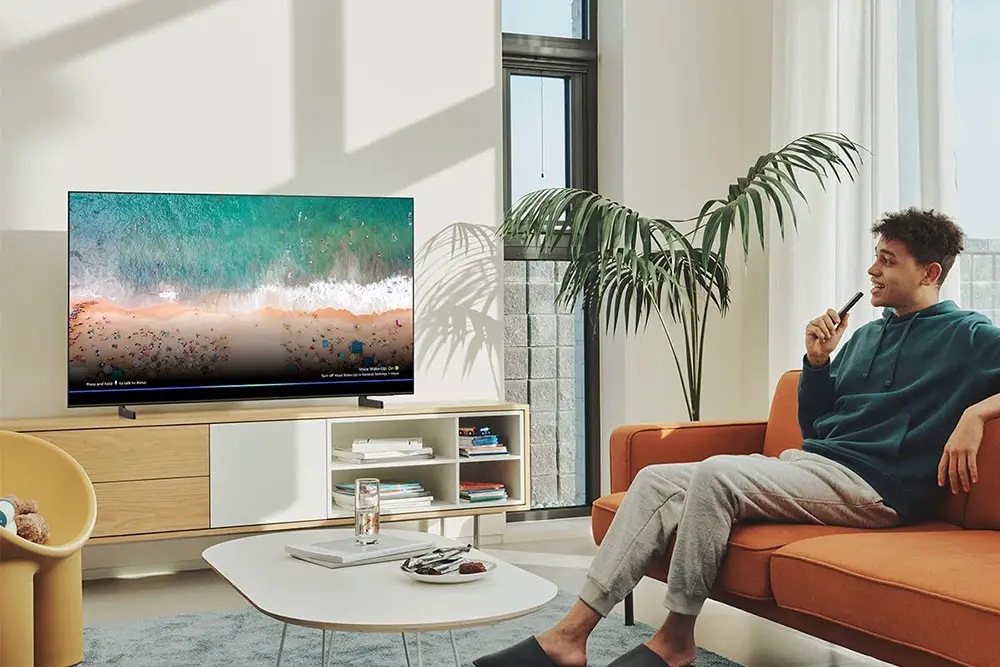
The Q60B has slightly better contrast but all other tests came very close to our last year’s numbers. The TV is a mid-low tier release and as such there shouldn’t be high expectations of its image performance. It is respectable but nothing extraordinary.
Audio Quality
Another area where the Q60B seems to be very similar to last year is in the audio.
Manufacturers have tried the last few years to create audio systems that improve the overall audio signature of their flat TVs. Some fare better than others but most of them are not suited for anything more than casual viewing. In the Q60B we find Samsung’s proprietary audio system that is called Object Tracking Sound and here we get the Lite version of it which is exactly what last year’s Q60A had.
What this “Lite” version has different is that while both OTS and OTS+ systems use more speakers at the sides and top of the panel in order to track the sound according to what is displayed the one we have here is using a set of virtual speakers at the top in parallel to the two real speakers at the bottom. Obviously the result is not the same as having real drivers and we would say that while the Q60B can perform slightly better than a conventional 2.0 channel system it was not as good as the other TVs with OTS or OTS+.
In particular the Q60B is equipped with a 2.0 channels system with a total of 20 watts of power and in parallel with the Object Tracking Sound Lite audio system you get sound that feels like having a bit more volume but don’t expect any Earth shattering performance as there is still a lot of distortion especially on the upper volume levels.
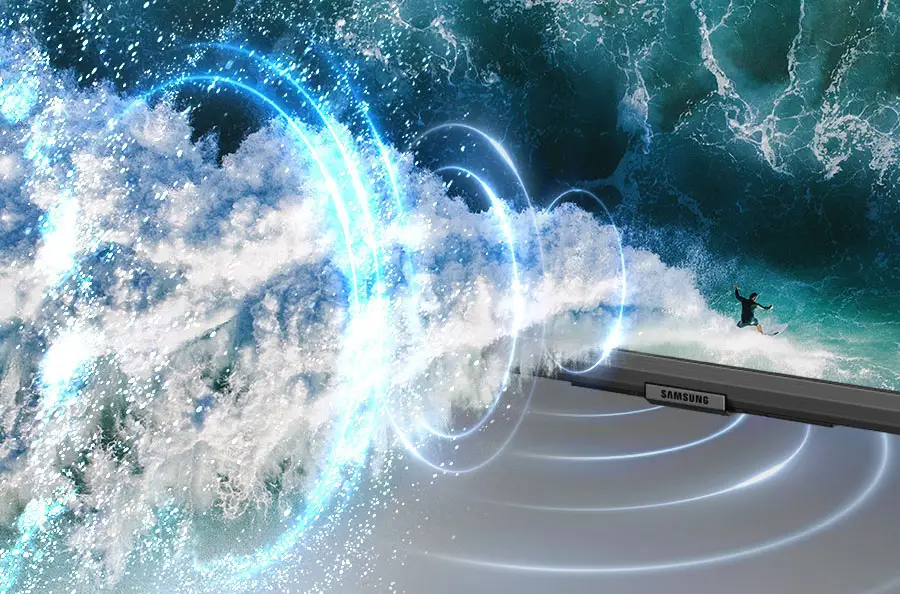
The TV supports Dolby Audio but there is no native Dolby Atmos. At least you can pass-through Dolby Atmos through the included eARC to some Dolby Atmos soundbar or dedicated sound system. DTS support is completely absent once again this year as it is not only missing from native support but it cannot also be passed-through from any of the available ports. Samsung has completely dropped DTS support and from what we see they are not going to bring it back.
A feature that finds its way from last year is Adaptive Sound. Keep in mind that there is also Adaptive Sound+ that is being used in the more expensive models and is a more advanced system of the one we get here. With Adaptive Sound the TV can automatically make adjustments for the best sound experience possible according to what content is viewed at each specific time.
Lastly we get Q-Symphony which is a feature that you can use to combine the TVs audio system with an appropriate soundbar that also supports that. This way the audio will be synced and output from both devices for an even more immersive audio experience. Samsung has released a whole lineup of soundbars that support this feature in case you are thinking of getting one.
Overall no surprises here. The Q60B is exactly the same as last year and in general its performance is good only for casual use. If you want immersion then at least a soundbar is a must if not a full dedicated surround system.
Ports and Connectivity
Next we will be looking at what the Q60B offers in terms of connections and from we see we get exactly the same layout as the Q60A had so it seems that here Samsung hadn’t changed anything either.
Let’s start from those ports looking sideways and here we get 2 USB ports for connecting external storage devices along with a couple of HDMI ports and an Ethernet port between them for wired connection to a local network. There is also the usual antenna port on the bottom end of this section. Next to these we get another HDMI port and a Digital Audio output that looks backwards although this feels like a strange arrangement compared to having all ports together.
No analog ports for one more year, something we started noticing in 2021 and it seems that it will not be long before only a handful of releases will feature them in the future.
Unfortunately the TV does not support the new HDMI 2.1 ports and uses the older HDMI 2.0 instead. In fact this is the only QLED that doesn’t have HDMI 2.1 as everything above this one come with full HDMI 2.1 support. Also the USB ports are the older v2.0 which is not all that surprising to be honest. At least we do get eARC support which allows you to send high-quality object-based audio like Dolby Atmos to another device and is another handy feature that many seek nowadays.
As for it’s wireless capabilities the Q60B comes with the usual built-in WiFi 5 (802.11ac) and also with Bluetooth 5.2 which is an actual update from last year’s v4.2.
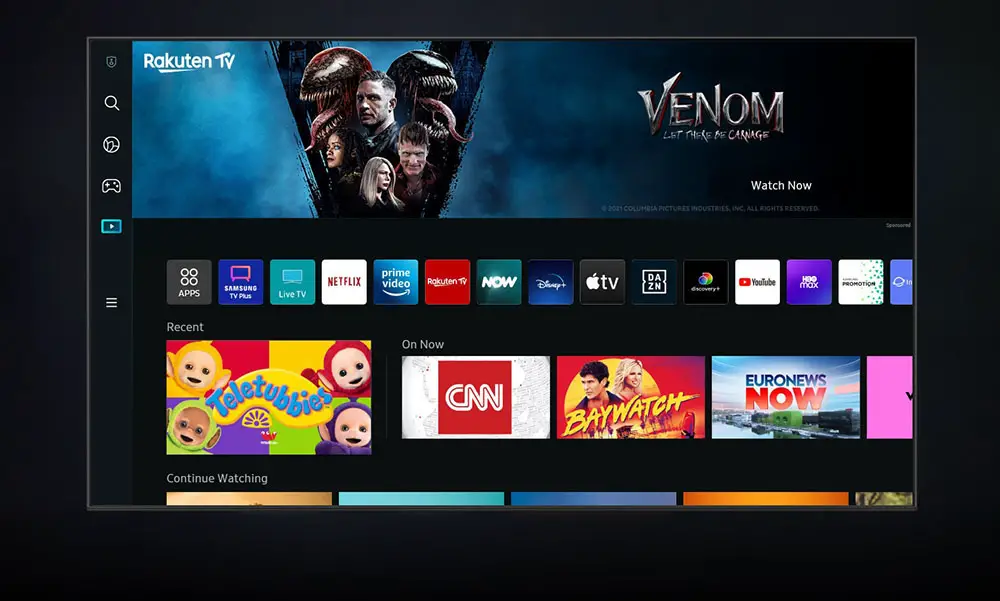
OS, Apps and Features
Being a Samsung TV means that for its OS we find the usual Tizen platform which has been updated to its 2022 version. The Q60B is using the same OS we saw recently in the Samsung S95B with only some minor omissions but the core experience along with most features are present here also.
Samsung decided to follow Google and LG and made the new Tizen occupy the whole screen instead of being a tile based row at the bottom of the screen, exactly as Google TV and webOS are this year.
It seems that smart TV platforms opt for a more personalized experience and as such the new Tizen 2022 tries to provide you with options that are tailored for your viewing habits. As such there are personalized ads, recommendations based on your viewing patterns both for streaming services and broadcasting channels and even shopping suggestions.
If you have used Tizen before, the new version may feel a bit chaotic at first. This was the same with Google TV and webOS and certainly you will need to spend some time with it to get your bearings. But once you get the hung of it, it is easier to navigate than it may seem.
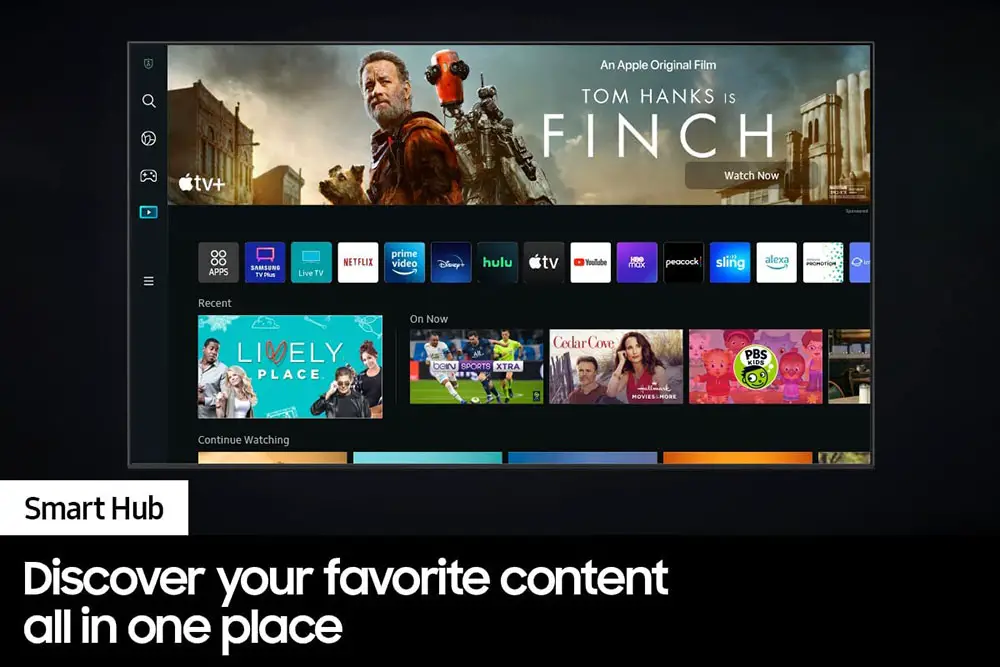
The new Samsung Smart TV Hub is separated in different sections and it allows you to navigate easily through all of them. At the left of the screen there is a single column with a few central selections including Media, Game (Gaming Hub) and Ambient while the rest of the screen is divided in rows with streaming services, apps and other functions and features available.
Having tried both the latest Google TV and webOS we can say that the new Tizen is not all that different. Obviously the layout is tailored to Samsung’s needs but in essence it offers the same thing. Navigation was smooth enough and jumping from one app to the other was relatively fast and with no obvious lags or delays.
Except from the visual overhaul the new Tizen comes with a few updates although fundamentally it offers the same kind of functionality we had experienced last year.
The Super Ultrawide GameView & Game Bar that was introduced last year makes a return but now it is called Game Bar 2.0 and got an update along the way. This is an on-screen menu that lets you make real-time adjustments to screen ratio, input lag check, FPS, HDR, wireless headset settings and more. This can be a really handy feature to gamers as you don’t have to mess with menus every time you want to check on a specific setting. With this quick feature you have everything in front of you with the click of a button.
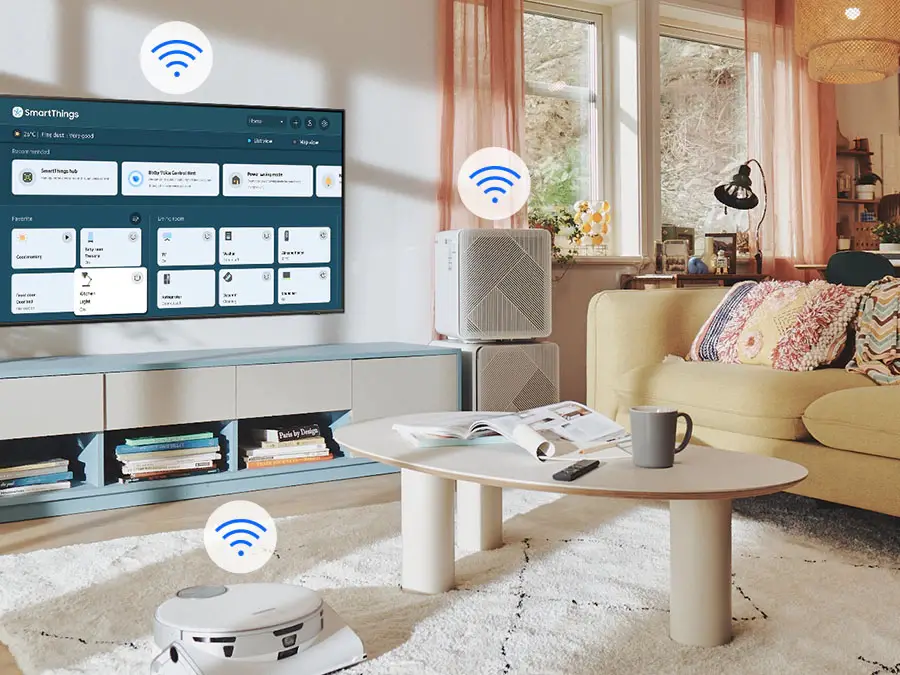
When it comes to content the Tizen platform is famous for it’s enormous support from developers. The Q60B offers practically all known services and platforms you can think of with Netflix, Apple TV, Disney Plus, Youtube, Amazon, Hulu, Rakuten, Demand 5 and BBC iPlayer just a few of the big names available. There is also Samsung TV plus which offers hundreds of subscription-free channels to choose from. Many of these services can playback in both 4K with HDR like Netflix and Amazon but this is very much app dependent.
A function that has been retained from the last few years is SmartThings integration. With it you can make your TV the central hub of all your smart houses devices. These can be lights, electronic locks, alarms, vacuum robots, thermostats and everything that supports the SmartThings platform.
Obviously another feature that could not be missing is voice control. It seems that Samsung is really trying to market their own Bixby service but even if you are not very fond of that there is Amazon’s Alexa or Google Assistant to choose from. While if you are an Apple guy then don’t get disappointed as there is also Airplay 2 support and you can use Siri through it for your voice commands. Unfortunately while Airplay is available HomeKit is not and this seems to be the same across the entire Samsung lineup.

Another feature that was introduced a couple of years ago and seems to be a standard now is Multi-View and although at it’s core it’s not something entirely new Samsung took it a step further. Multi-View is basically a more advanced screen mirroring and with it instead of just simply projecting the screen from your mobile device on the TV you can choose to have two screens showing both TV content and what your mobile device shows.
In addition to Multi-View there is also Tap View and with it you can mirror your phone on your TV with just a tap to continue enjoying movies, music, and apps on the bigger screen within seconds.
The Q60B also comes with Ambient Mode which seems to have become the standard in less expensive units lately. Keep in mind that this is the simple and not the plus version we saw in the S95B and as a result comes with less functions available.
Samsung Health is another returning feature from last year. Last year with the coronavirus pandemic many people were staying indoors so Samsung thought that exercise at home would be on the rise. So many of their TVs came with Samsung’s program in order to stay in shape. It seems that Samsung liked it so they kept it in for another year.
The new Tizen in the Q60B looks and feels the same as the one we saw in the S95B. It misses a couple more specialized features but in essence this is the same OS across Samsung’s entire 2022 lineup. The new layout design takes some time to get used to but once you do it’s smooth sailing afterwards.
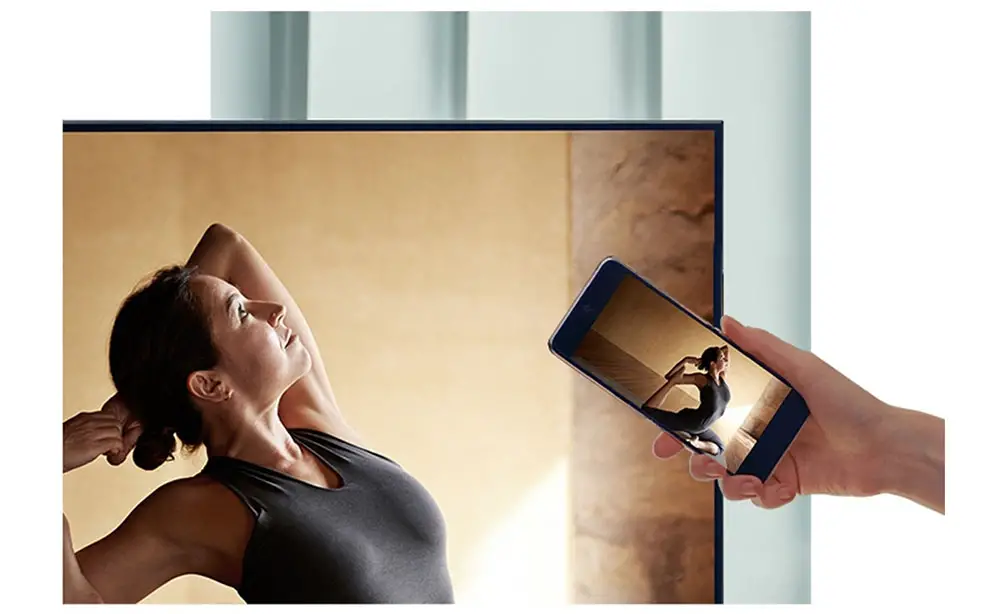
Final Thoughts
Although the Q60A did offer some changes compared to 2020’s Q60T, it seems this is not the case with the Q60B. We did notice some differences with its predecessor but in general we would say that these were either too small or not so important to make a real difference.
The Q60B is an affordable QLED and it should be judged as one. Good upscaling abilities, nice colors, good out of the box performance, satisfactory motion and low input lag makes it a nice TV for casual use or in case you are looking for a cheap gaming TV. The new Tizen is very good although it takes some time to get used to but once you do there is no turning back.
The TV has all the same weaknesses the Q60A had. Brightness is not very impressive which makes HDR content look dimmer in comparison, viewing angles are so and so and the use of an Edge LED backlight surely has a detrimental effect on the overall image quality. The inclusion of a 60Hz along with HDMI 2.0 ports means that many gaming features are left out of this one so if you really need those then looking at the Q70B is your only option.
In the end, the Q60B feels more like a Q60A with an updated Tizen than a new release. Small changes here and there does not make this a better TV than its predecessor but it doesn’t make it a worse one either. For the right price, which by the way is cheaper than what the Q60A was last year, we are sure the Samsung Q60B will be an excellent choice for those looking for some entertainment on a tight budget.
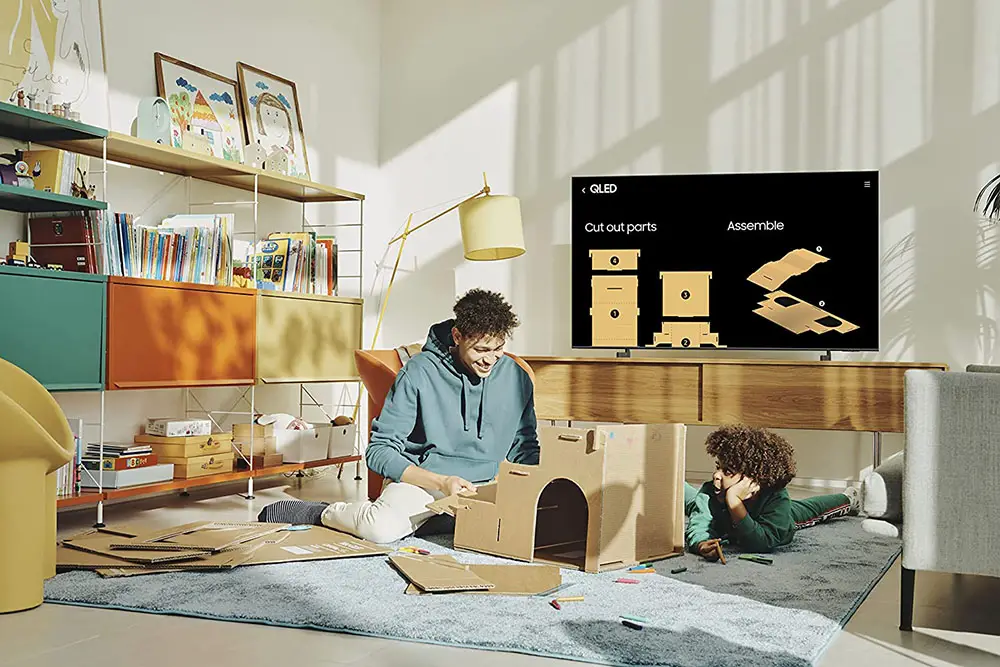
For more reviews you can check our dedicated 4K LED LCD TV reviews list or even look at our Product Reviews Table where you can find the brand and specific product you are looking for.
Cheapest Places to Buy :
*We are a reader-supported website. When you buy through links on our site, we may earn a small affiliate commission at no extra cost to you. Home Media Entertainment does not accept money for reviews.*
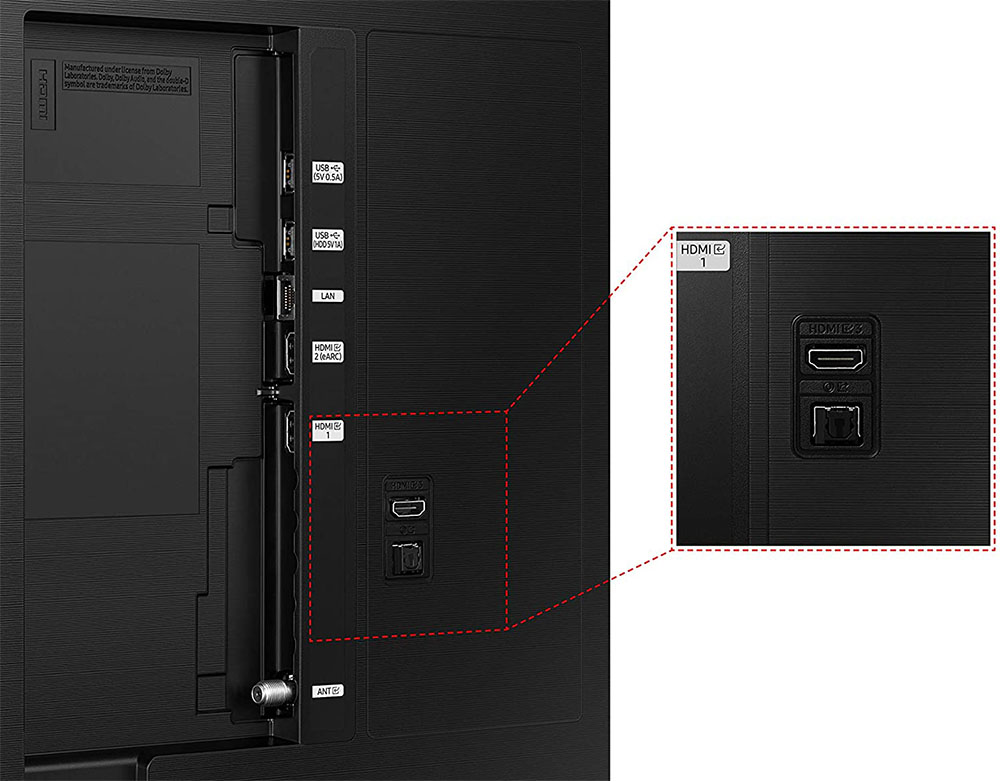
Not having 120Hz support is a big deal in this one. Surely it hurts it not having HDMI 2.1 and 120Hz as many gamers surely will go for the Q70B. But one I wanted to know, does the screen reflects the sunlight? I mean does it shine? Because I have a bright room with a lot of windows with direct sunlight that could be a problem.
The Q60B uses a semi-gloss screen. Reflections handling is ok but don’t expect it to handle direct sunlight very good.
What a helpful review this is, companies tend to rebrand their older versions quite often and it comes as no surprise that Q60B is almost exactly like the Q60A. I agree with others that say that missing HDMI 2.1 and 120Hz is the biggest problem of this one. Why Samsung releases new models if they just use a new OS and slap a new name on it?
Hey Johnny. It’s a marketing thing really. If they can make a few more sales this way then this is what they will do. In essence the Q60B feels like a Q60A with an updated Tizen in it which was not all that hard to do with the Q60A in the first place. But this doesn’t drive sales unfortunately.
hi from greece ,im thinking to buy it in 65” to replace a samsung au9072 50” is it worth it?
the other options is lg ur81006 or samsung cu8000. thanks
living room most times dark room for movies only.
Hello Kosti. Unfortunately I haven’t tested the AU9072 so I cannot really compare it with the other models you mention. And for the LG we have only checked the UR8000, so I don’t know how much different the UR81006 is to the UR8000. The only think I can say for sure is that between the Q60B and the CU8000 I would go for the Q60B.